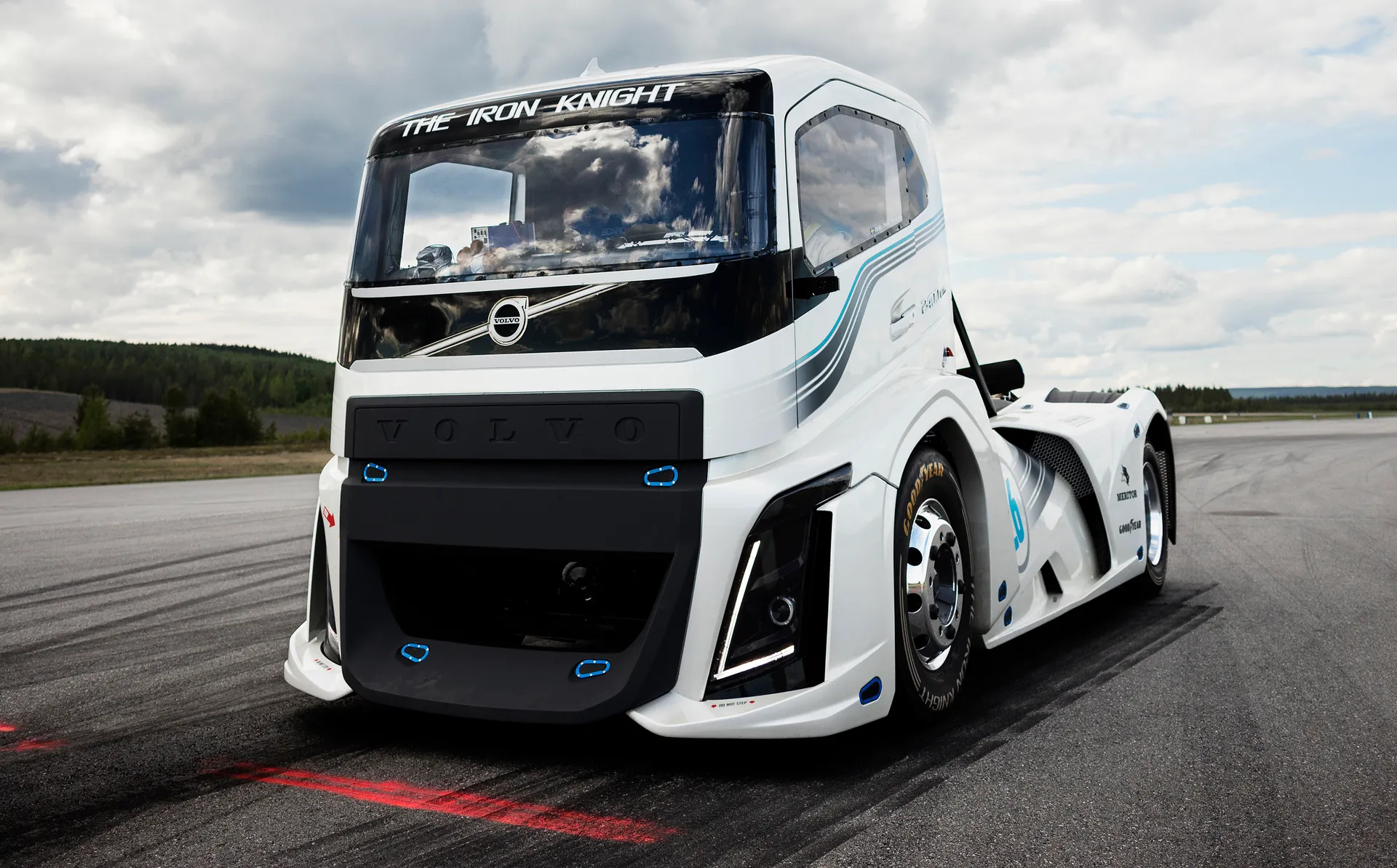Application Form
Please fill out the form below, so we can contact you as soon as possible!

When we think of speed, the sleek contours of sports cars and the roar of motorcycles usually come to mind. Rarely do we imagine the hulking presence of a semi-truck barreling down the highway at record-breaking speed.
But in the realm of automotive innovation, things are always being done beyond the limits of possible. Welcome to the exciting world of high-speed trucking, where enthusiasts and engineers are shattering stereotypes to build the fastest semi-truck ever. The article explores the engineering feats, the determined people behind the scenes, and the exhilarating moments that characterize the heavyweight transportation category’s pursuit of speed.
The Volvo Iron Knight is unmatched in the world of high-speed trucks. Being the fastest semi-truck in the world, this engineering marvel demonstrates Volvo’s commitment to pushing the limits of what is possible for heavy-duty vehicles.
The Volvo Iron Knight is powered by a mid-mounted, modified D13 engine. This 12.8-liter, six-cylinder diesel engine can generate 6,000 Nm (4,425 lb-ft) of torque and an incredible 2,400 horsepower. The engine is matched with an especially created, highly performance-tuned I-Shift Dual Clutch transmission.
On August 24, 2016, the Volvo Iron Knight broke a remarkable speed record at a Swedish test track that was closed to the public. It set new world records in the standing 500-meter and standing kilometer categories and reached a maximum speed of 276 km/h (171 mph). Specifically, it reached 131.29 km/h (81.57 mph) over 500 meters and 169 km/h (105 mph) over one kilometer from a standstill under official conditions monitored by the International Federation of Automobiles (FIA).
There are some special innovative design features that allow Volvo Iron Knight to perform that well. Those are:
Breathtaking design and state-of-the-art technology come together in the Volvo Iron Knight, which is revolutionizing the high-speed transportation industry. It represents the automotive industry’s unwavering quest for speed and performance and is a technical marvel.
That power and speed can still be utilized in different ways, especially for critical deliveries.
Motorsport events frequently feature high-speed semi-trucks, which provide spectators with an exciting show and demonstrate engineering expertise. Vehicles such as the Volvo Iron Knight engage in time trials and speed records to showcase the potential of cutting-edge truck technology and highlight the creativity found in the trucking sector.
High-speed semi-trucks can be used in military applications to quickly deploy soldiers and equipment. In strategic operations, the capacity to move swiftly and effectively over a variety of terrains might be essential. These trucks’ increased strength and speed enable them to transport supplies to areas of high demand and keep up with quickly moving units, enhancing logistical effectiveness in emergency situations.
When it comes to emergency services, especially disaster response and relief operations, high-speed semi-trucks can be quite important. Swiftly delivering substantial amounts of equipment or supplies to disaster areas can greatly increase the efficiency of relief efforts and reaction times. Rapid evacuation from places at risk of natural disasters is another usage for these trucks.
As technology continues to evolve, the principles applied in high-speed semi-trucks could revolutionize commercial transportation. Faster delivery times could become feasible for long-haul freight services, reducing transit times for goods and increasing overall efficiency in the supply chain. This could be particularly advantageous for time-sensitive deliveries, such as perishable goods or urgent medical supplies.
Application Form
Please fill out the form below, so we can contact you as soon as possible!